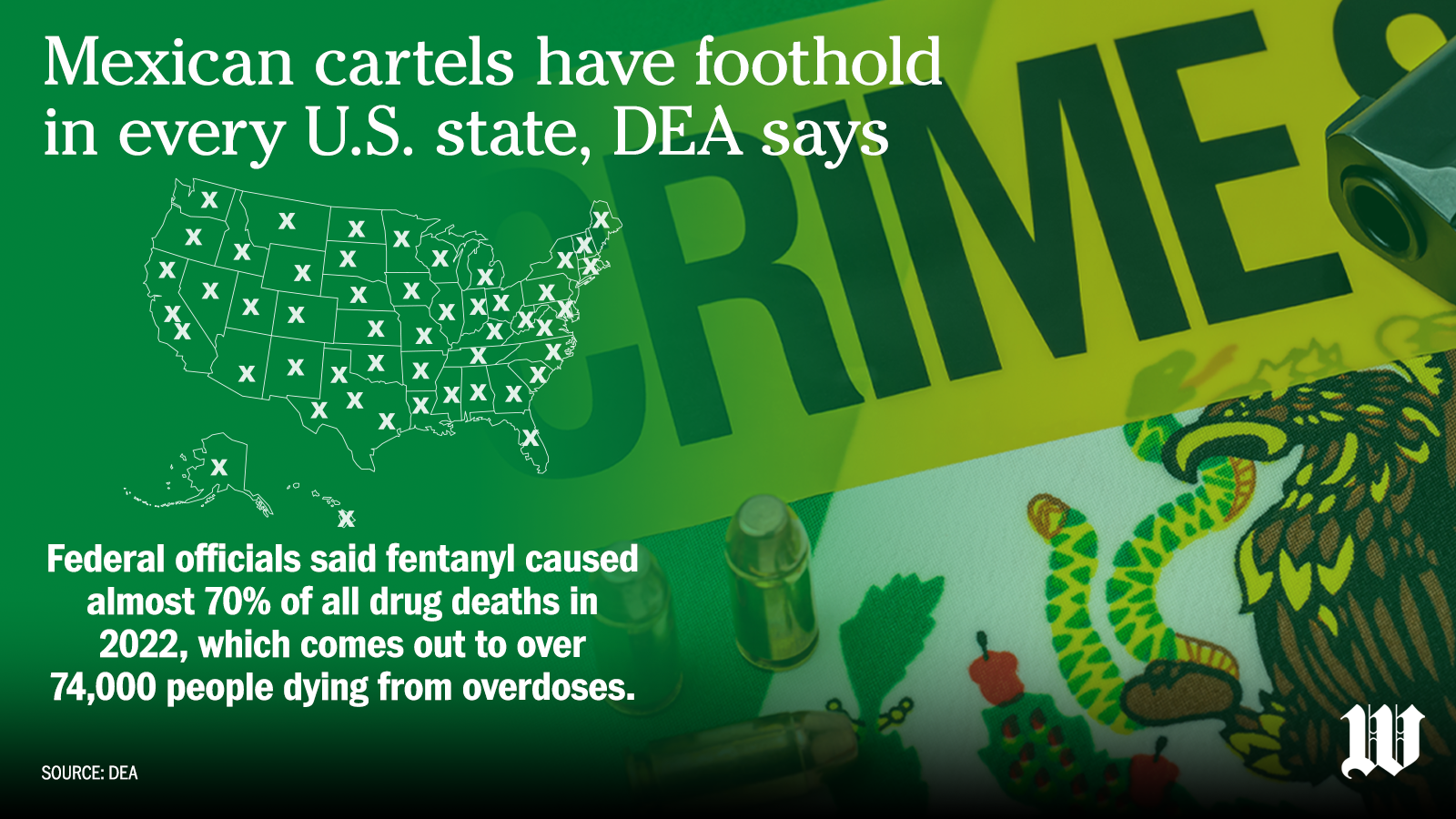Mexico’s two largest cartels are operating in every U.S. state and are driving the nation’s deadly overdose epidemic from fentanyl and other synthetic drugs, a new federal report says.
The Drug Enforcement Administration pegged the Sinaloa Cartel and the Nuevo Jalisco Generacion Cartel as the main narcotic traffickers in its annual report released this month.
The DEA’s National Drug Threat Assessment said both cartels have a major presence in cities such as Los Angeles, Phoenix, Houston, Chicago, Atlanta and Miami.
Those cities serve as main hubs for the cartels, who establish smaller branches throughout the country to distribute methamphetamine and fentanyl — the synthetic opioid that is about 100 times more potent than morphine.
Federal officials said fentanyl caused almost 70% of all drug deaths in 2022, which comes out to over 74,000 people dying from overdoses. Provisional data cited by the DEA said the synthetic opioid caused more than 38,000 deaths in just the first six months of 2023.
That same data showed methamphetamine was connected to more than 34,000 deaths in 2022 and over 28,000 in 2023.
Cocaine — which often has fentanyl spliced into it — was tied to over 15,000 drug-related deaths in the first six months of 2023.
“The 2024 National Drug Threat Assessment highlights the dangerous shift from plant-based drugs to synthetic drugs,” DEA Direct Anne Milgram wrote in the report. “This shift has resulted in the most dangerous and deadly drug crisis the United States has ever faced. These synthetic drugs, such as fentanyl and methamphetamine, are responsible for nearly all of the fatal drug poisonings in our nation. The Sinaloa and Jalisco Cartels are at the heart of this crisis.”
Fentanyl is a man-made drug that the DEA said is cheaper to produce than crop-based drugs such as heroin and cocaine.

The Sinaloa and Jalisco cartels first ship precursor chemicals from China, and sometimes even India, into Mexico. Gang members then mass-produce the synthetic opioid in pill or powder form before transporting it to the U.S.
The report said cartels control Mexico’s main ports and have a number of truckers and other drug “mules” who will move the products into American cities through the main entry points on the U.S. Southern border.
Once they are stateside, cartel affiliates enlist local gangs to help them get drugs on the street and fuel the multi-billion dollar enterprise for both Mexican crime groups.
The cartels “dictate the flow of nearly all illicit drugs into the United States, and their dominance over the synthetic drug trade in particular is evident in the relentless stream of illicit fentanyl and methamphetamine crossing the border toward U.S. markets,” the report said.
• Matt Delaney can be reached at mdelaney@washingtontimes.com.




Please read our comment policy before commenting.